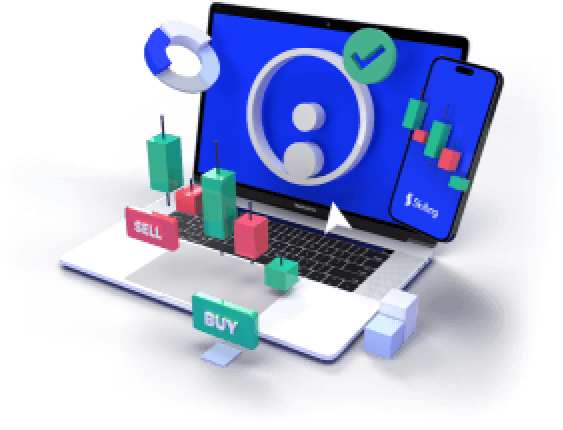
As the name suggests, common stock also known as shares represents common ownership in a company. When you buy common stock, you own a small piece of that company. This gives you a share of the company’s gains and the right to vote on important decisions. Keep reading to learn how it works.
What is common stock?
Common stock is a type of ownership in a company. When you buy common stock, you own a small part of that company. This ownership gives you certain rights, such as voting on important company decisions and receiving a share of the company’s profits, usually in the form of dividends.
Companies issue common stock to raise money for various purposes, like expanding their business or developing new products. As a common stockholder, you have the potential to benefit from the company’s growth. However, the value of your shares can go up or down based on how well the company performs. Investing in common stock can be a way to build wealth over time, but it also comes with risks.
Practice with a Demo Account
Try our demo account and experience real market conditions.
71% of retail CFD accounts lose money.

Example of common stock
Imagine you want to invest in a well-known company like Apple Inc. You decide to buy shares of Apple’s common stock. By doing this, you become a part-owner of Apple, even if it’s just a small fraction.
As a common stockholder, you get certain benefits. For example, if Apple makes a profit and decides to distribute dividends, you receive a portion based on the number of shares you own. Additionally, if Apple holds a shareholder meeting to vote on important decisions, like electing board members, you have the right to vote.
Apple’s stock value could fluctuate based on its financial performance, new product launches, and market conditions. If Apple does well, the value of your shares may increase, allowing you to sell them at a higher price. However, if the company faces challenges, the value of your shares might decrease.
Types of common stock
1. Class A and Class B Shares
Some companies offer classes of common stock, like Class A and Class B shares.
What’s the difference?
- Class A shares usually have more voting rights compared to Class B shares. For example, one Class A share might give you 10 votes, while one Class B share might give you just 1 vote.
- Class B shares often have fewer voting rights but might be available at a lower price or offer other benefits.
Example: Alphabet Inc. (Google’s parent company) has Class A (GOOGL) and Class B shares. Class A shares have voting rights, while Class B shares do not.
2. Voting vs. Non-Voting shares
Companies may issue common stock with or without voting rights.
What’s the difference?
- Voting shares allow shareholders to vote on company decisions, such as electing board members or approving major changes.
- Non-voting shares do not give shareholders the right to vote, but they still allow you to receive dividends and benefit from the company’s growth.
Example : Some companies, like Facebook (Meta), have non-voting shares available for investors.
3. Dividend-paying vs. Non-Dividend-Paying shares
Common stock can also be categorized based on whether or not it pays dividends.
What’s the difference?
- Dividend-paying shares give you regular payments from the company’s profits.
- Non-dividend-paying shares do not offer dividend payments but might appreciate more in value over time.
Example: Many tech companies, like Apple, pay dividends to their shareholders, while others, like Amazon reinvest profits into the company instead.
Preferred vs Common stock
| Preferred stock | Common stock | |
|---|---|---|
| Dividend priority | Preferred stockholders receive dividends before common stockholders, often at a fixed rate. | Common stockholders receive dividends after preferred stockholders, and dividends are not fixed. |
| Voting rights | Preferred stockholders usually do not have voting rights in corporate decisions. | Common stockholders typically have voting rights, allowing them to influence corporate policies. |
| Dividend structure | Dividends are typically fixed and may be cumulative, requiring payment of missed dividends in the future. | Dividends can vary based on the company's profitability and the discretion of the board. |
| Liquidation preference | In liquidation preferred stockholders are paid before common stockholders but after debt holders. | In liquidation, common stockholders are paid after all debt holders and preferred stockholders. |
| Capital appreciation | Some preferred stocks can be converted into a specified number of common shares, providing potential for capital appreciation. | Common stockholders benefit directly from capital appreciation if the company’s stock price increases. |
| Risk level | Lower risk compared to common stock due to stable dividends and liquidation preference. | Higher risk compared to preferred stock due to variability in dividends and residual claim status. |
| Income stability | Provides more stable income through fixed dividends, appealing to risk-averse investors. | Income is less stable and dependent on the company's performance and board decisions. |
| Market sensitivity | Preferred stock prices are generally less sensitive to market conditions. | Common stock prices are more sensitive to market conditions and company performance. |
Advantages and disadvantages of common Stock
| Advantages | Disadvantages |
|---|---|
| 1. Potential for high returns: Common stock offers the potential for significant capital appreciation over time. If a company performs well, its stock price could increase, leading to substantial returns for investors. | 1. Higher risk: Common stock is generally more volatile than other investments, such as bonds or preferred stocks. The value of common stock could fluctuate widely based on market conditions, company performance, and economic factors. Investors could experience significant losses, especially if the company underperforms or faces financial difficulties. |
| 2. Voting rights and ownership: Common stockholders usually have voting rights at shareholder meetings, allowing them to vote on important matters such as board elections and corporate policies. This gives investors a say in the company's direction and governance. | 2. No guaranteed returns: Unlike bonds or preferred stocks, common stock does not guarantee dividends or a return of the original investment. Companies may choose not to pay dividends or might reinvest profits into the business rather than distributing them to shareholders. |
Summary
As you’ve seen, common stock represents ownership in a company, offering both the potential for high returns and some inherent risks. Investing in common stocks means participating in a company's success and having a say in its future through voting rights. However, it also involves higher volatility and no guaranteed returns.
Want to trade global stocks like Tesla(TSLA) and even commodities like gold - XAUUSD and silver - XAGUSD with very low fees? Sign up for Skilling today and take advantage of our award-winning trading platforms designed for both beginners and experienced traders.











